The Shoebox Scanner
During the lockdown restrictions of 2020 we all had to endure the hardship of not seeing extended families and close friends. Many of us rediscovered old photo albums and were able to find comfort in viewing cherished memories. Re-photographing snapshots, using smartphones, and sharing via email, text message or social media was a way of keeping in touch with loved ones. The trend for digitising old photography collections has been on the increase ever since, with people wanting to preserve and share their treasured memories.
What is a shoebox scanner?
A shoebox scanner, or A4 photo scanner, is a compact desktop scanner that is capable of quickly processing large batches of photographs. The name shoebox scanner derives from the fact that shoeboxes, have historically been utilised to store many items other than just shoes. The compact size and rigidity of a shoebox make them ideal for storing old 6x4” snapshot photographs.
Benefits include:
- Share memories with family & friends
- Connect with social media followers
- Archive large photography collections
- Enjoy peace of mind
- Hone photo editing skills
- Enjoy a new pastime
Many A4 document scanners are capable of digitising photographs but there are two dedicated photo scanners that are specifically manufactured to efficiently capture large batches of snapshot photographs. The Canon imageFORMULA RS40 and the Epson FastFoto FF-680W. Both are extremely good at creating digital images that can be quickly shared via email or cloud services. Alternatively large family photography collections can be scanned, at higher resolutions, to create a secure digital archive.
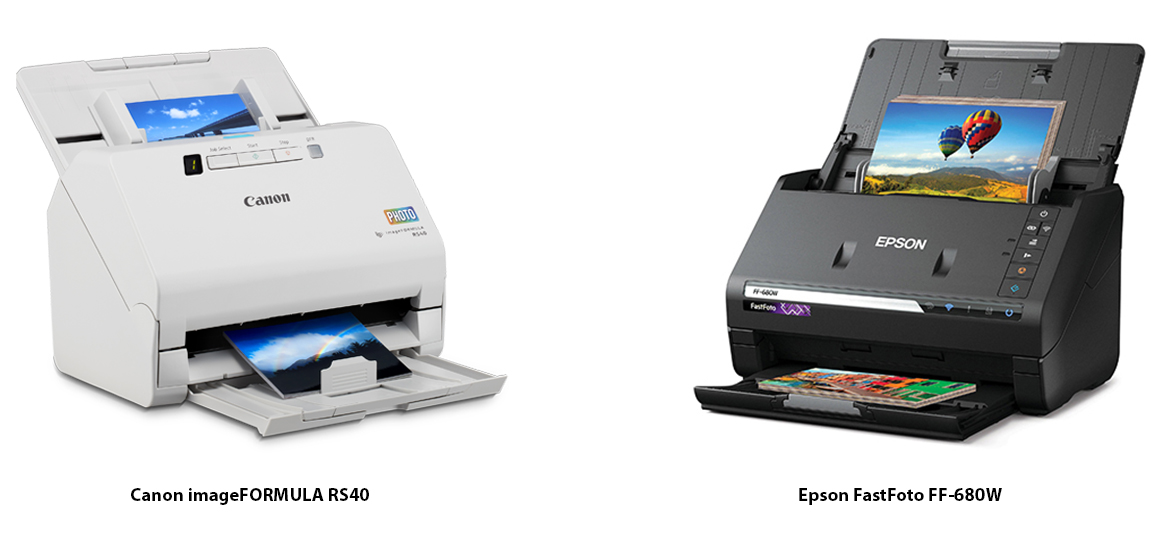
The Scanner Shop recently tested the Canon RS40 and the Epson FF-680W for accuracy, speed and ease of use. The initial set-up for both photo scanners was quick and trouble free. Connection was via USB to an Apple MacBook Pro running Big Sur version 11.6.7. It is worth noting that the Epson FF-680W has built-in Wi-Fi giving you the extra option of wireless scanning.
Interface software for the Canon RS40 and the Epson FF-680W is user friendly. Scan settings and destination folders are easy to set-up. Scanning to email, Google Drive and Dropbox is straight forward. With Canon’s Capture OnTouch and Epson’s FastFoto software sharing files is a simple process.
Test one
For the first test, a batch of seventeen colour snapshots, sized at 6x4” (15.24 x 10.16 cm) were scanned to a desktop folder. FULL AUTO settings were chosen at 300dpi with the output file format set to JPEG.
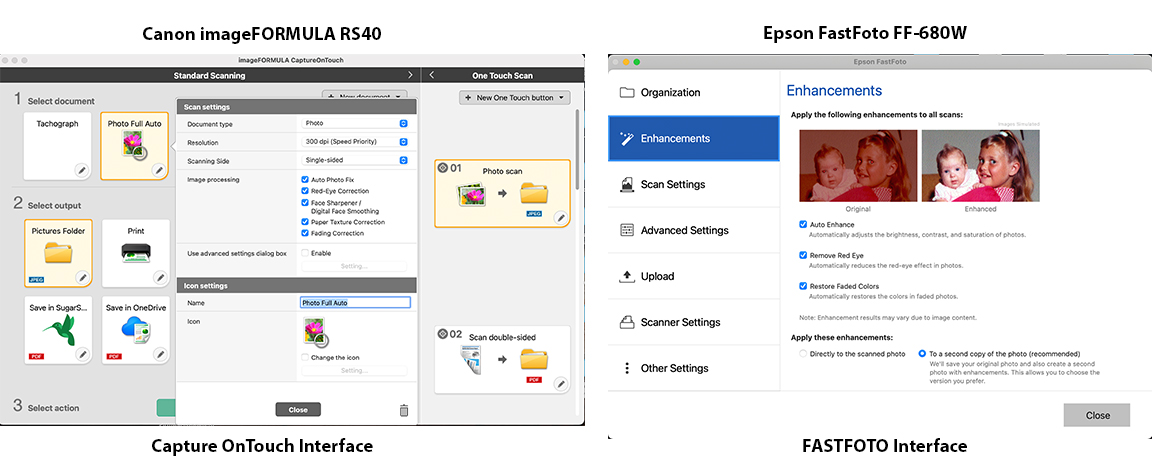
The Epson FF-680W scanned, rendered and saved the 17 files in 40 seconds. The Canon RS40 performed the same task in 62 seconds. Examples of the two scans are shown below. The first shows the scanned images at 100% magnification. The second at 400% shows image quality in more detail.
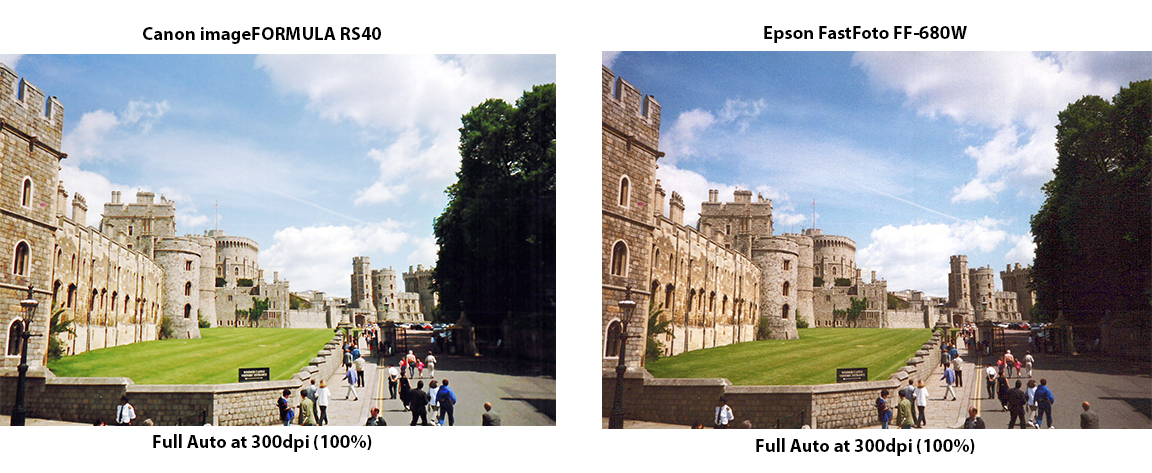
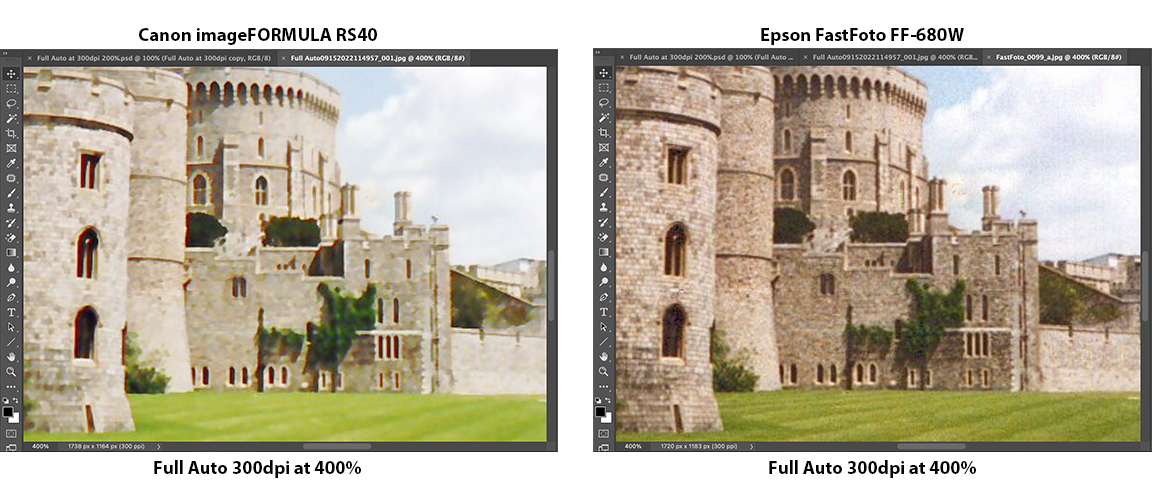
In full auto mode, Epson’s FastFoto software saves two versions of the same scan, enhanced (full auto) and original - a useful feature which allows you to compare the original against the enhanced version. FastFoto also detects any special handwritten notes, on the back of photos, and automatically scans them, which is beneficial when archiving large batches of photos.
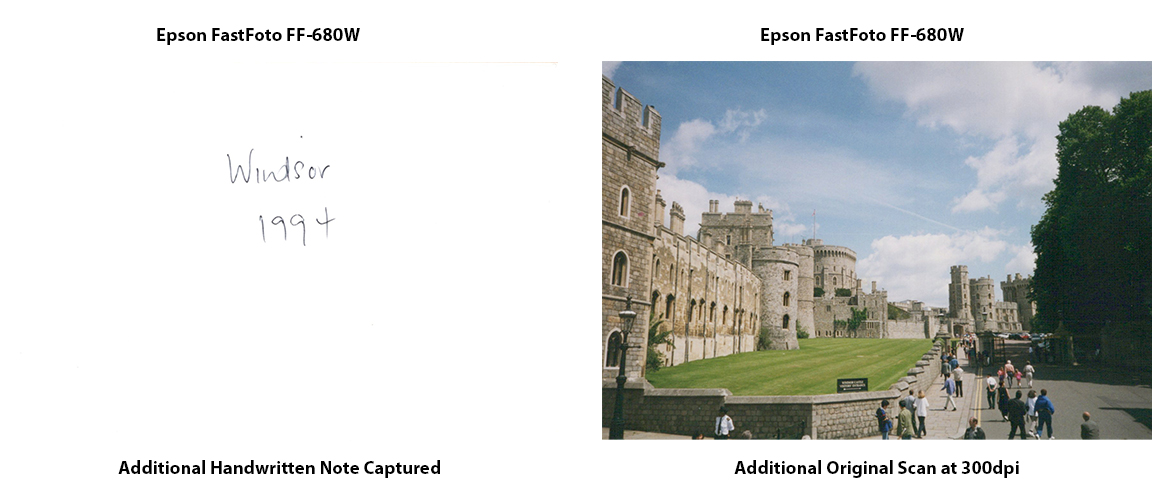
It is important to note that similar results can be achieved with the Canon RS40 within the inclusive Canon ‘Capture On-Touch’ software by changing the scan settings from Auto to manual.
Test two
A single, 7 x 5” (17.78 x 12.7 cm), black and white photograph was scanned for the second test. No auto adjustments were selected. A higher resolution of 600dpi was selected with the output file format set to TIFF. Although the photograph was black and white, it was scanned as a colour image - this technique captures more information, which ultimately improves image quality.
The Canon RS40 scanned, rendered and saved the digital file in 19 seconds with the Epson FF-680W completing the scan in 11 seconds.
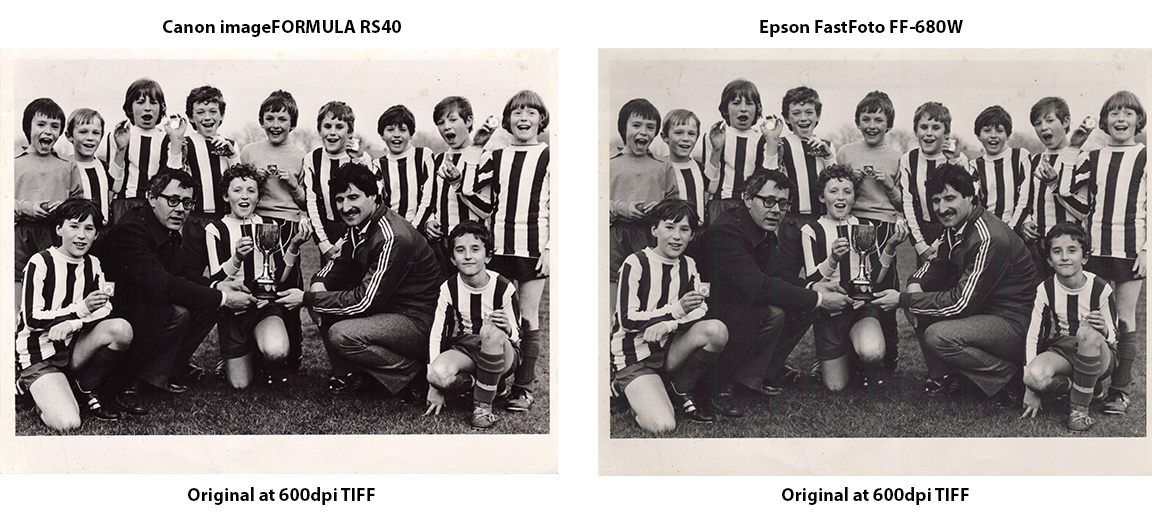
The resulting image can be seen above at a magnification of 33.3%. By turning off the ‘Auto’ settings, a more accurate representation of the original photograph is achieved. The increase in resolution from 300dpi to 600dpi has helped the overall quality of both scans. Below is the same image magnified at 200%.
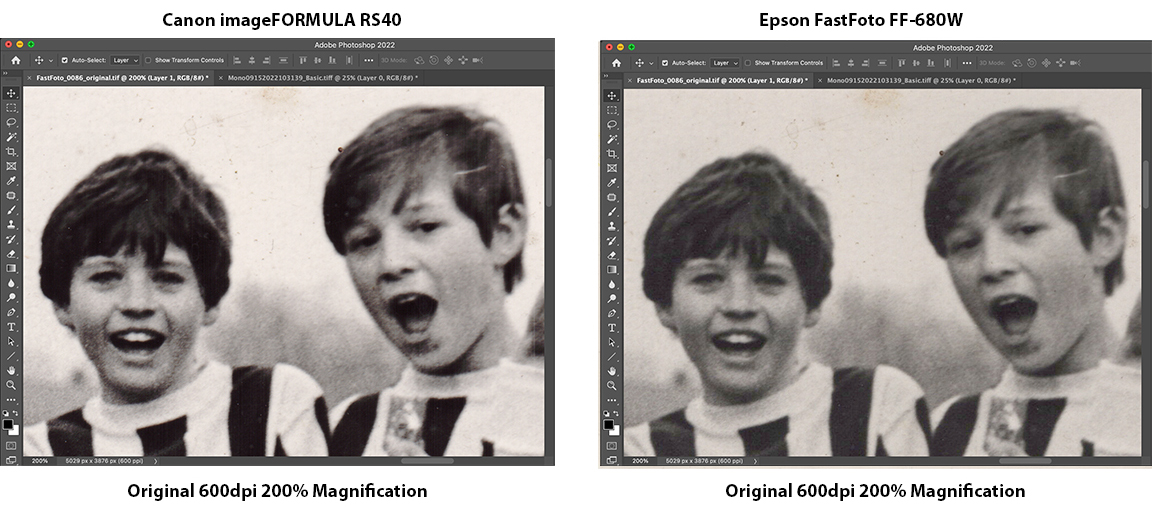
The Canon RS40 and the Epson FF-680W photo scanners are great for quickly scanning photographs and sharing them with family, friends, or followers on social media. Set to full auto and a low resolution (200dpi or below) both scanners will rapidly scan large batches of printed snapshots. They are also a brilliant way of archiving family photography collections. If you are not in a rush and want to spend time systematically scanning photographs at a higher resolution, both scanners are an excellent option.
Find out more about the Canon RS40 and the Epson FF-680W on The Scanner Shop website. A good way to view the technical attributes of both scanners is to use our ‘Comparison’ function – simply tick the ‘Compare’ button on each product listing, then choose the ‘View Your Compared Items’ section in the bottom right-hand corner of the web page. This will present the attributes for the Canon RS40 and the Epson FF-680W, side by side, in a clear and concise table.
It is worth noting that fragile photographs should be scanned using a flatbed scanner. Flatbed units are a better option when scanning delicate documents, as there is no chance of a paper jam damaging the printed photo.
For more information visit the Flatbed Scanners section of our website.
Published 21/09/2022
Digital Camera World recently reviewed the Canon RS40, noting the scanner a 'recommended' product, 4.5 stars.
Amended 13/12/2022
